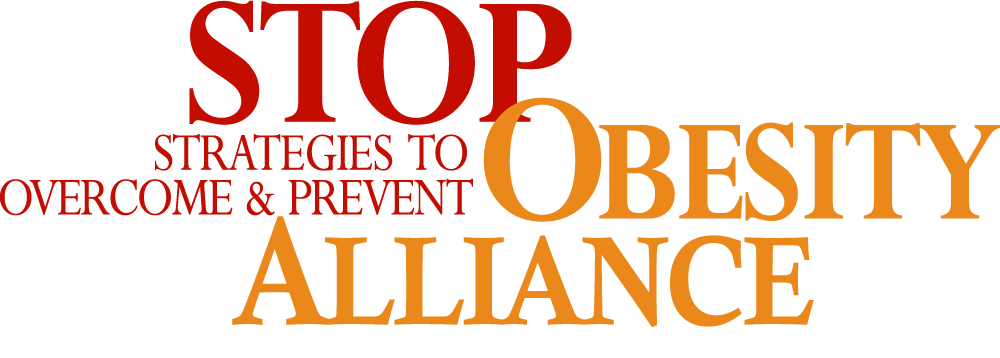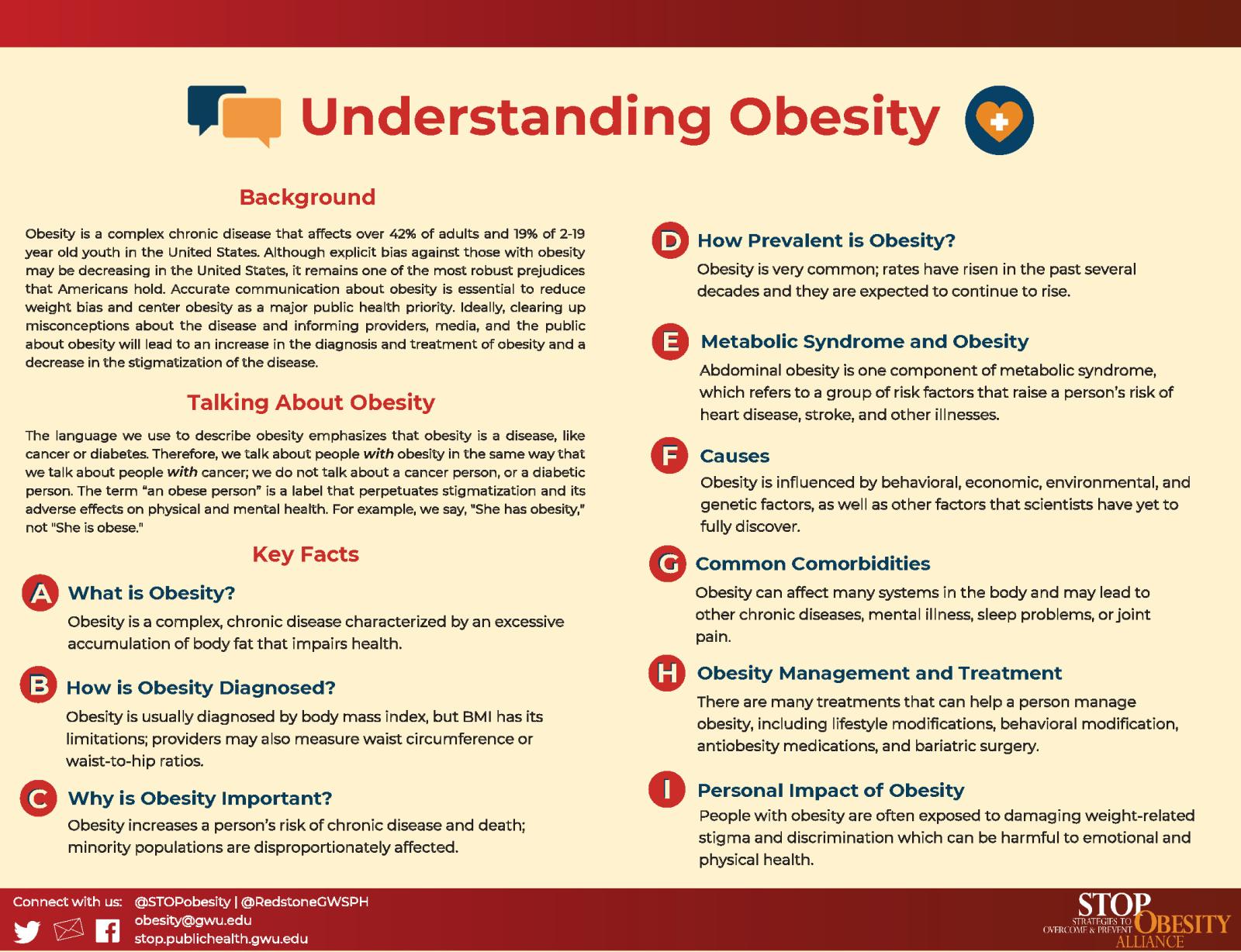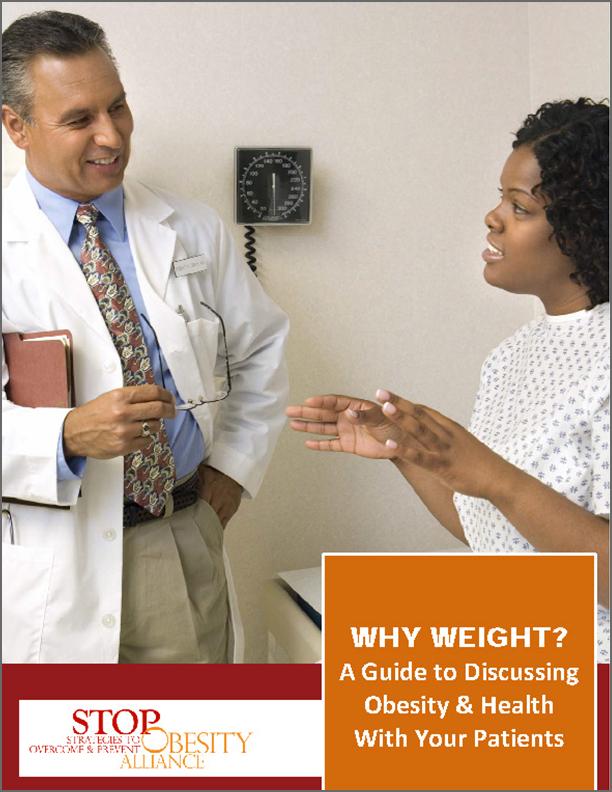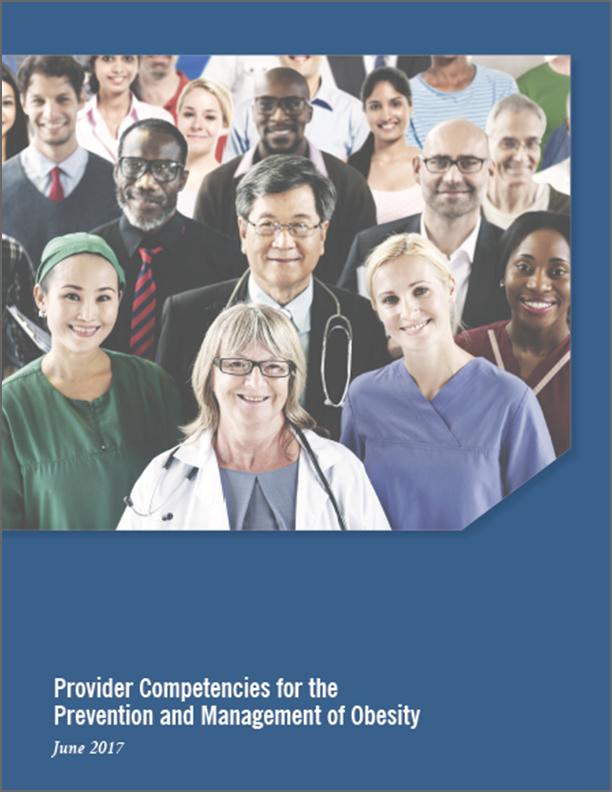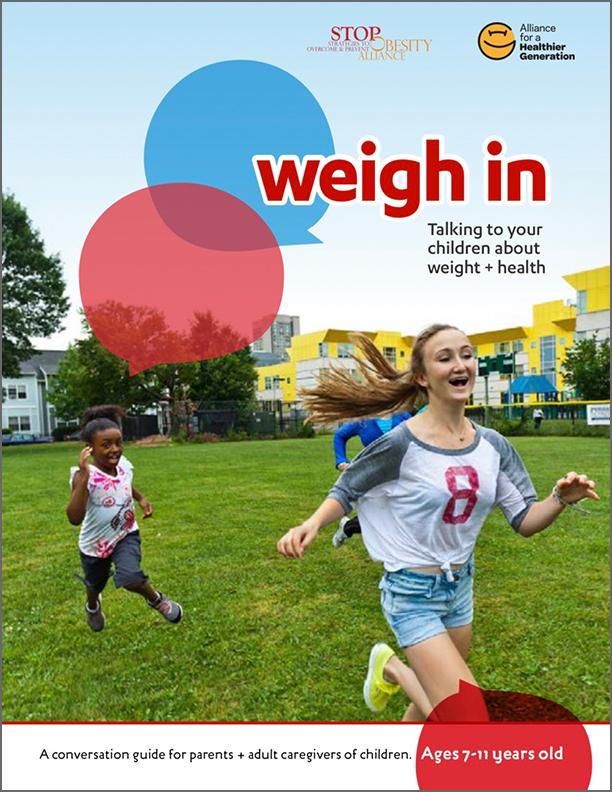Resources
Understanding Obesity
This messaging framework prepared by the STOP Obesity Alliance features accessible and unbiased information about the harms of weight bias, as well as guidance on destigmatizing the language used to discuss obesity.
Read the Understanding Obesity Framework
Fast Facts
Basic information about the science of obesity and current strategies to address it
Weight Can't Wait
A guide for the management of obesity in the Primary Care Setting
Why Weight? Guide
A guide to discussing obesity & health with your patients
Obesity Care Competencies
- Provider Competencies for the Prevention and Management of Obesity
-
The Provider Competencies for the Prevention and Management of Obesity were designed by more than 20 leading health organizations representing a dozen health professions. They are aimed at many types of health professionals engaged in obesity prevention and management. Collectively, the competencies establish a working knowledge of obesity, and are therefore best used together. Recognizing that the depth of knowledge or skill for a given competency will vary based on specialty, each specialty is encouraged to adapt these competencies to fit their needs.
Weigh In guide
The Weigh-In Guide and Discussion Toolkit support parents and caregivers in discussing weight and health with their children.
Explore the Weigh In Guide resources
COVID-19 Resources
Infographics
Additional Resources
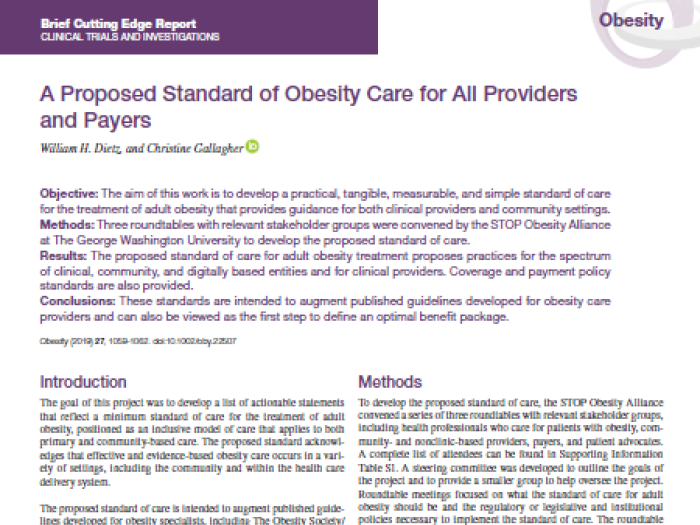
A Proposed Standard of Care (2019)
June 20, 2019
Proposed standard of care for adult obesity treatment proposes practices for spectrum of clinical, community, and digitally-based entities & clinical providers.

Obesity Care Competencies
July 1, 2017
More than 20 leading health organizations representing a range of health care providers released a set of interdisciplinary educational competencies.

STOP Roundtable on Obesity Management and Coverage
February 3, 2016
On February 2nd, the STOP Obesity Alliance hosted a roundtable discussion on Obesity Management and Coverage.
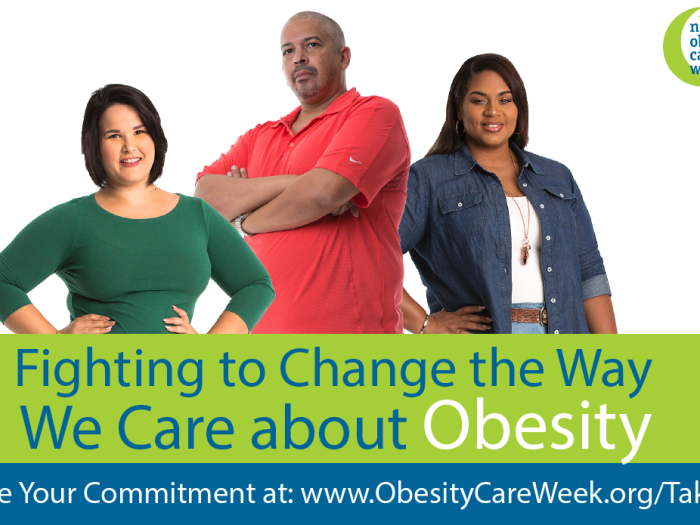
More than 35 Leading U.S. Health Organizations Launch Campaign to Improve Obesity Care
September 1, 2015
More than 35 leading U.S. healthcare organizations have joined together to form National Obesity Care Week (NOCW).

New Tool Prepares Health Care Providers to Discuss Weight and Health With Adult Patients
November 6, 2014
"Why Weight?" is a unique tool designed to help providers build a safe and trusting environment with patients.
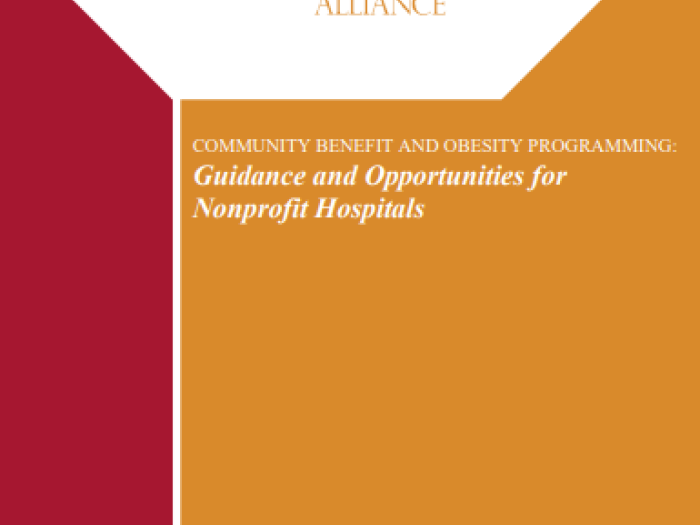
Community Benefit and Obesity Programming: Guidance and Opportunities for Nonprofit Hospitals (2013)
December 10, 2013
Community Benefit and Obesity Programming: Guidance and Opportunities for Nonprofit Hospitals (2013) - Download

New Guide Prepares Parents for Tough Conversations With Kids About Weight and Health
September 26, 2012
Have you ever been taken off guard by a child’s question about weight?
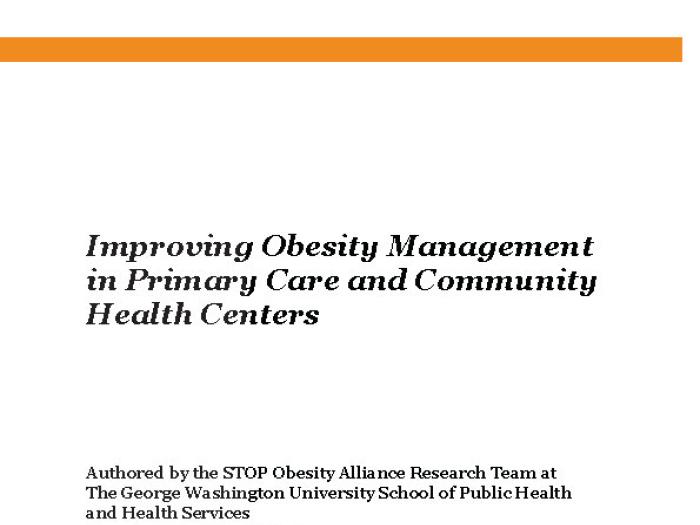
Improving Obesity Management in Primary Care and Community Health Centers
November 7, 2011
The following is a brief summary of our findings and key recommendations for improving obesity management in CHC and primary care settings.
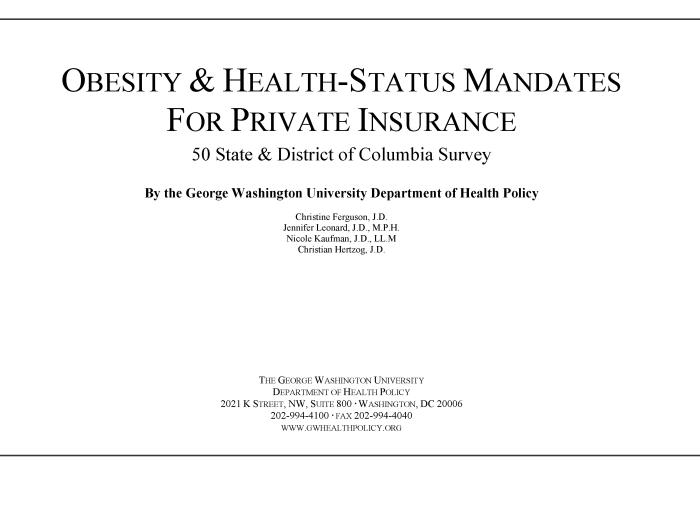
Obesity & Health-Status Mandates for Private Insurance (2010)
50 State & District of Columbia Survey
December 10, 2010
Obesity & Health-Status Mandates for Private Insurance - 50 State & District of Columbia Survey by the GWU Department of Health Policy
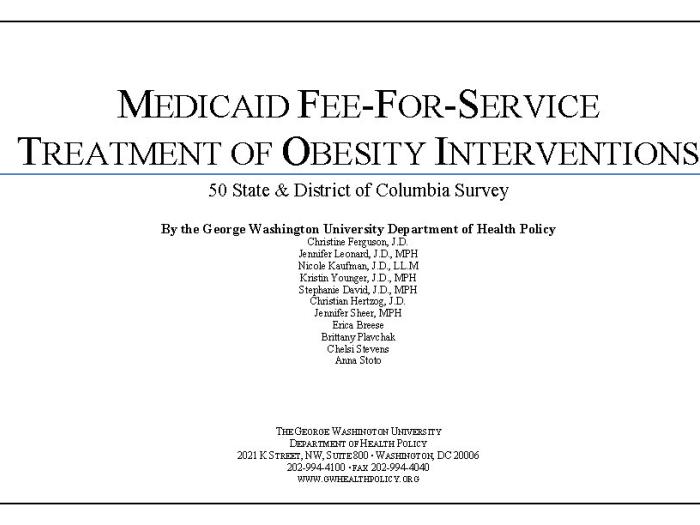
Medicaid Fee-for-Service Treatment of Obesity Interventions
50 State & District of Columbia Survey
September 27, 2010
Medicaid Fee-for-Service Treatment of Obesity Interventions – 50 State & District of Columbia Survey
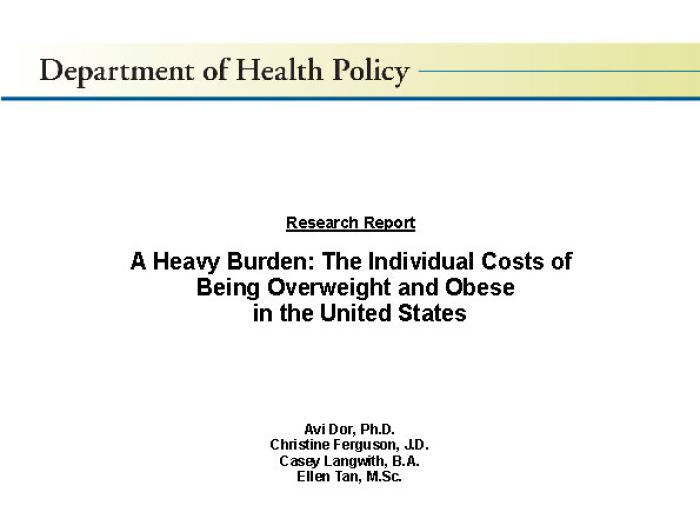
A Heavy Burden: The Individual Costs of Being Overweight and Obese in the United States (2010)
Research Report
September 21, 2010
Research Report: A Heavy Burden: The Individual Costs of Being Overweight and Obese in the United States

16th and 17th U.S. Surgeons General, STOP Obesity Alliance Announce America has Reached Tipping Point on Obesity, Call for Direct Action
September 11, 2009
The two most recent Surgeons General of the United States led the Strategies to Overcome and Prevent (STOP) Obesity Alliance in urging policymakers.
